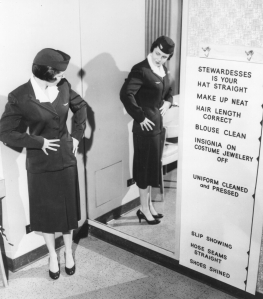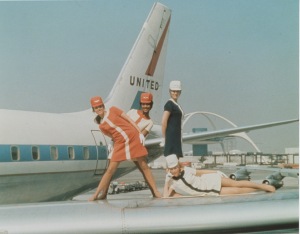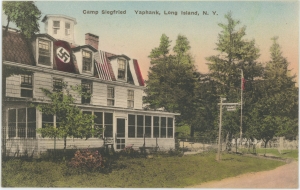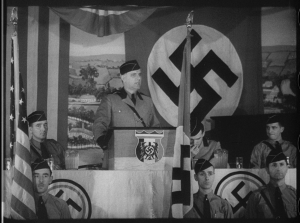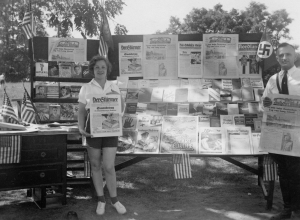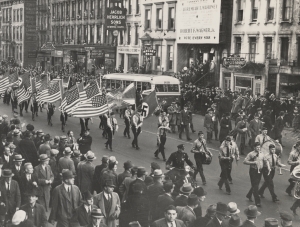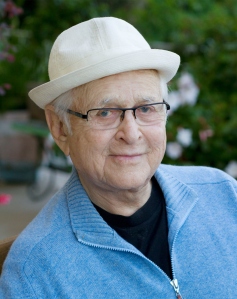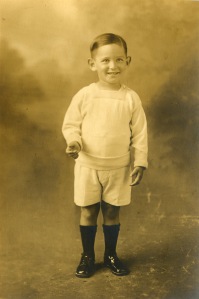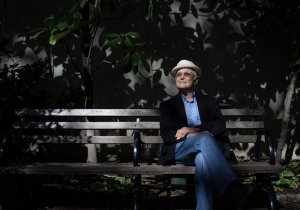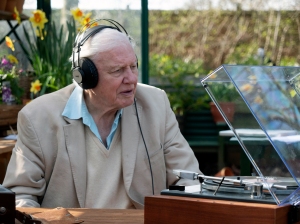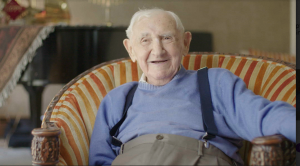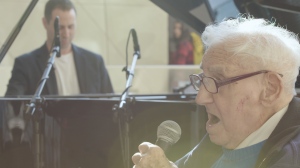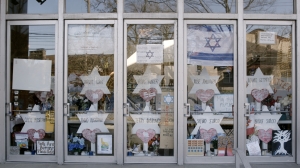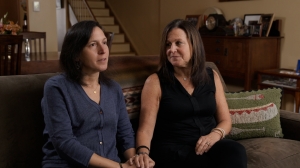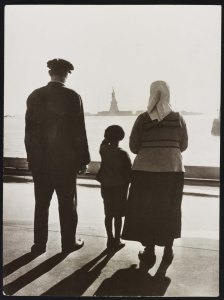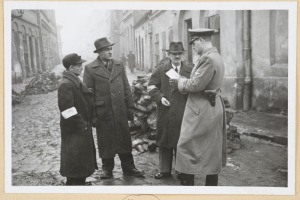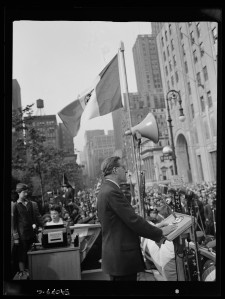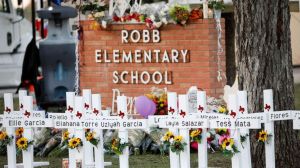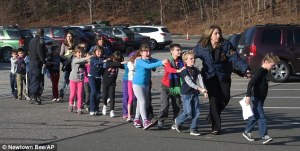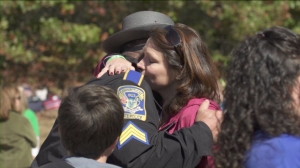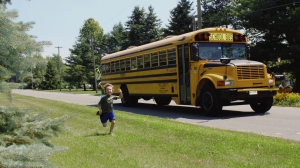 “It was supposed to be a critique of capitalism. It turned out to be a celebration of it.”
“It was supposed to be a critique of capitalism. It turned out to be a celebration of it.”
Ever play Monopoly as a kid? Ever actually win the game? Or did every sit-down with America’s “favorite board game” begin with good intentions and high hopes and end in a quagmire of acrimony? If so, you are not alone.
If, like me, you remember those endless rabble-rousing, character assassinating Monopoly games of your youth with glee, you are a prime audience for the new hour-long documentary, Ruthless: Monopoly’s Secret History, premiering on the long-running PBS American Experience series tonight, Monday, February 20, 2023, 9:00 pm/ET; 8:00 pm/C. Check broadcast listings in your region. It will also stream simultaneously with broadcast (see below for details).
While playing Monopoly has been known to expose aspects of our personalities that are better left under wraps, Ruthless has a bigger, more insidious fish to fry. Emmy® Award-winning filmmaker Stephen Ives (I reviewed one of his many notable PBS documentaries, The Big Burn, here in FrontRowCenter in 2015) tracks Monopoly’s incendiary backstory through the history of board games in America; the class, race and gender engines fueling capitalism, most especially during the late 19th century Gilded Age, the Great Depression, and the OPEC and gas shortages of the 1970s; and the rogues gallery of offbeat characters who played pivotal roles in the design and marketing of Monopoly.

Stephen Ives wrote, directed and co-produced RUTHLESS: MONOPOLY’S SECRET HISTORY for the PBS series, AMERICAN EXPERIENCE.
In my Q&A with Ruthless writer, director, co-producer Stephen Ives that follows (conducted via email), we explore the prickly provenance of America’s favorite board game and the cutthroat impulses manifested by its creators, marketers and players during its checkered past.
Judith Trojan: You’ve collaborated with Ken Burns on his landmark series and produced films for American Experience that cover pivotal historic figures and events. Why narrow your gaze and focus on the game of Monopoly and its backstory? Were you an avid board game player as a kid?
Stephen Ives: I wanted to try and use Monopoly as a lens through which to look at American society. It is an altar, and we bow down in front of it and worship the gods of capitalism. We pass it on to our children as a rite of passage without thinking about the values and attitudes that are embedded in it. It is a powerful piece of nostalgia that helps us define who we are.
Then I discovered the game had a secret history, and I knew it was a story that had to be told. Oddly enough, my great great grandfather and his brother had a company in Salem, MA, where they published the first board game in America, in 1843, called The Mansion of Happiness. It was a deeply moralistic game that must have been a total bore to play, but you can say that board games have been in my family for a long time.
Trojan: Fascinating! Were you aware of Monopoly’s unsavory past before you began your research for the film?

Professor Ralph Anspach, inventor of the ANTI-MONOPOLY board game, was sued by General Mills, the owners of Parker Brothers, and ordered to stop producing the game. He challenged their 1935 patent to the original game of MONOPOLY all the way to the Supreme Court. Photo courtesy Associated Press.
Ives: Yes, I came across Ralph Anspach’s self-published autobiography, The Billion Dollar Monopoly Swindle (1998), and I was totally surprised that his story and the game’s secret history had never been brought to a wide audience.
Trojan: Your film, Ruthless: Monopoly’s Secret History, is a revelation on several levels. In 50 minutes, you introduce viewers to the history of board games in America, the rise and downside of capitalism, its impact on the genesis of Monopoly, and the major players, for better or worse, who had a hand in the game’s evolution. Is there one singular story that we should remember every time we pull Monopoly out of the box?
Ives: Yes, I think you should look at the mythic story of Charles Darrow that is printed in the rule book and recognize it for what it is: corporate spin-doctoring. Instead of that false narrative, remember this remarkable woman, Lizzie Magie, who was the true inspiration behind the game, and whose admirable ideals and dreams for a more equitable society are as relevant today as they were then.
Trojan: Where did you do your research? Any roadblocks?
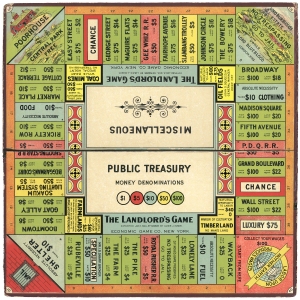
Trailblazing game designer Lizzie Magie patented THE LANDLORD’S GAME, the precursor to MONOPOLY, in 1904. Photo courtesy Tom Forsyth.
Ives: We scoured the country looking for old folk game copies of Lizzie Magie’s The Landlord’s Game and early copies of Charles Darrow’s boards. There was a fabulous collection of those boards, owned by Malcolm Forbes. But they had been sold off, and some of the collectors who owned them remained elusive. We did find one of those quirky collectors living out in rural southwest Colorado. His collection was a gold mine, and he was a dream to work with. He let us re-photograph some of his boards which really helped the visual palette of the film.
Trojan: You include running commentary by economics professor Ralph Anspach (1926-2022) that seems to have been filmed predominantly in 2004 or thereabouts. His relentless David and Goliath battle with Parker Brothers (then owned by General Mills) challenging their patent on Monopoly in pursuit of justice for his Anti-Monopoly game would have destroyed most people financially and pulled the plug on a happy family life. But Anspach never gave up. Why do you think he persisted and what lesson can be learned from his challenge to Parker Brothers’ faux Monopoly origin story?
Ives: I first uncovered this story 18 years ago, and for a number of reasons the film never got off the ground. But I decided to shoot a long interview with Ralph in New York City. Thank God I did because by the time we started production he had passed away. I really admired Ralph because he was a fighter, with a very strong moral compass. He stuck to his guns when a lesser mortal would have caved under pressure from a huge cereal conglomerate like General Mills.
I think growing up in Germany and fleeing the Nazis had a profound effect on him. He was determined to stand up against what he felt was injustice, and there was a real stubborn streak in him that helped him persevere. Ralph wanted the film to be made. His wife, Sylvia, said they re-watched his interview not long before he died in 2022, and they really enjoyed it. I just wish he had lived long enough to see the final film.
Trojan: Why were board games during the early 20th century so easily open to redesign and rule tweaking by players of all ages and persuasions?
Ives: There is a tradition of games – like checkers or chess – becoming folk games that are passed around and slowly take their final form. As journalist and game expert Tristan Donovan says in our film, Monopoly was, in a way, the last folk game. The streets on the board lent themselves to revision and customization.
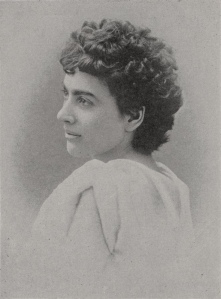
Elizabeth “Lizzie” Magie (1866-1948).
Trojan: Elizabeth (Lizzie) Magie is now credited with inventing Monopoly in 1904 via her The Landlord’s Game, which she ironically designed and patented to illustrate the evils of landlords and monopolistic practices. She was a remarkable trailblazer–feminist, writer, performance artist, proponent of radical economic theorist Henry George. She grew up in a politically powerful family and was an out-of-the-box thinker a century before that term was invented. Her accomplishments as a game designer were literally snuffed out by a monopoly, a market structure that she despised. Her story cries out for more extensive film coverage. Where did your research about Lizzie Magie begin and end? Any startling revelations?
Ives: Hats off to Mary Pilon, the marvelous writer and author of the best selling book The Monopolists (Bloomsbury, 2015). She did a lot of research about Lizzie, and uncovered much of her biography. But you are right, we just scratched the surface of her fabulous life. Some of the material we used came from big stories about her in Joseph Pulitzer’s newspaper, The World. It was clear that her groundbreaking stunts and flair for publicity really struck a chord with early 20th century America. We couldn’t find any living relatives, unfortunately.
Trojan: Can you clarify how Quakers in Atlantic City played an important role in conceptualizing iconic features of Monopoly’s game board? This was really an eye opener! I’m a lifelong denizen of the Jersey shore and am familiar with Cape May and Ocean Grove’s special appeal to Methodists, but Quakers in Atlantic City? Who exactly were those game-playing Quakers, and why would they have any interest in such a cutthroat game?
Ives: As a Quaker myself, on my mother’s side, I know what you mean. Why would a group of teetotalers have such a presence in America’s vacation playground from the 1920s? The answer is that Atlantic City was near Philadelphia, and Quakers were good businessmen. They were particularly into the hotel trade and ended up owning some of the bigger and nicer hotels in Atlantic City. And they had to make some concessions to alcohol in order to keep their places competitive. But they were like any other group looking for a fun and diverting board game to play, and they were the ones that happened to customize the streets, add color groupings and add hotels to the game.
It was their game that Charles Darrow ended up claiming as his own. Interestingly enough, the property, Marvin Gardens, was misspelled on the board Darrow copied. It is actually a combination of the communities of Margate and Ventor, so it should have been spelled Marven Gardens, with an “e.” But Darrow wasn’t originally from Atlantic City; so he copied the mistake onto his boards as “Marvin,” thereby helping to prove that he stole the concept, and enshrining a typo into America’s favorite board game.
Trojan: Where does Parker Brothers stand in the business and history of board games? Is its reputation tarnished by the phony origin story its founders concocted and pitched about Monopoly?
Ives: I think Parker Brothers did what any corporation would have done under the circumstances. They had a blockbuster game that was saving their company from bankruptcy, and they were ruthless in the protecting that game, to the point where they set out to monopolize the game of Monopoly. You can’t make this stuff up!
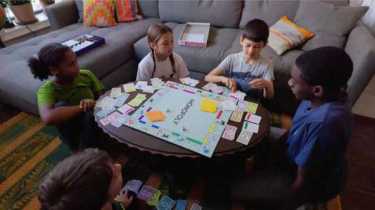
These kids play the game throughout RUTHLESS: MONOPOLY’S SECRET HISTORY from the PBS AMERICAN EXPERIENCE series.
Trojan: Throughout your film, aptly titled Ruthless, you highlight footage of a bunch of young, well-heeled kids playing Monopoly. As the game progresses, they become more animated, competitive and aggressive. They reminded me of my own experiences with the game growing up in the Fifties and early Sixties.
I realized a startling fact: I never ever played Monopoly with my friends, only with my cousins during the holidays or on summer visits. We were, except for one younger boy, only two or three years apart in age…usually that amounted to two girls and three boys, tops. Our games were intensely competitive, long, loud and fun… until they weren’t. In the end, nastiness ensued and someone was always accused of cheating. Why do you think Monopoly triggers and reveals so much about our darker side? It’s probably why I never opted to play the game with my friends… it proved to be too dangerous!
Ives: One of the big problems with Monopoly is that it NEVER ENDS, but this is because we are playing it the wrong way. Under Lizzie Magie’s original rules, if you land on a property and don’t buy it, it is supposed to be auctioned off, which speeds the game along. And you aren’t supposed to put that pile of money in the center and win it if you land on Free Parking. That adds liquidity to the game and keeps it going. I think Monopoly can often end in discord because the game liberates us to take on roles, and express ourselves outside of the usual mores and codes in society, and players can take things to an extreme. That, and the marathon aspect of it, can lead to blow ups. That said, it is still deeply satisfying to crush your older brother or sister!
Trojan: Is there a timely take-away from your film?
 Ives: We are at a moment of extreme income inequality in this country, and the amount of money in the hands of people like Elon Musk and Jeff Bezos is, in my opinion, obscene. I think the Monopoly saga is a cautionary tale about what can happen to inventors and idealistic people like Lizzie Magie, who invent something marvelous, and get cast aside. That happens more than we like to admit in the American economic system. If we are going celebrate our brand of winner-take-all capitalism, we need to acknowledge that it isn’t a fair game, that all sorts of advantages, like class, race, gender or inheritance, can tilt the board in favor of the winner – most often a white man. Being clear-eyed about that is important, I think.
Ives: We are at a moment of extreme income inequality in this country, and the amount of money in the hands of people like Elon Musk and Jeff Bezos is, in my opinion, obscene. I think the Monopoly saga is a cautionary tale about what can happen to inventors and idealistic people like Lizzie Magie, who invent something marvelous, and get cast aside. That happens more than we like to admit in the American economic system. If we are going celebrate our brand of winner-take-all capitalism, we need to acknowledge that it isn’t a fair game, that all sorts of advantages, like class, race, gender or inheritance, can tilt the board in favor of the winner – most often a white man. Being clear-eyed about that is important, I think.
Trojan: What’s next for you? Is there a dream subject you have yet to film?
Ives: I hope to make a film about our history of inaction on global warming, and the catastrophic consequences of ignoring our past and the future for our children and grandchildren! Ω
American Experience Ruthless: Monopoly’s Secret History is a production of GBH Boston and executive produced by Cameo George. The film debuts on the PBS American Experience series tonight, Monday, February 20, 2023, 9:00 – 10:00 pm/ET; 8:00 pm/C. Check local listings for air times and repeat broadcasts in your region. The film will stream simultaneously with broadcast and be available on all station-branded PBS platforms, including http://www.pbs.org/wgbh/americanexperience/ , the PBS Video App and, for members, on PBS Passport.
Ruthless: Monopoly’s Secret History will be a surefire hit with fans of Monopoly and other classic board games, and will have a long shelf life in high school and college classrooms and library and museum programs focusing on pop culture and the history of gaming in America.–Judith Trojan

